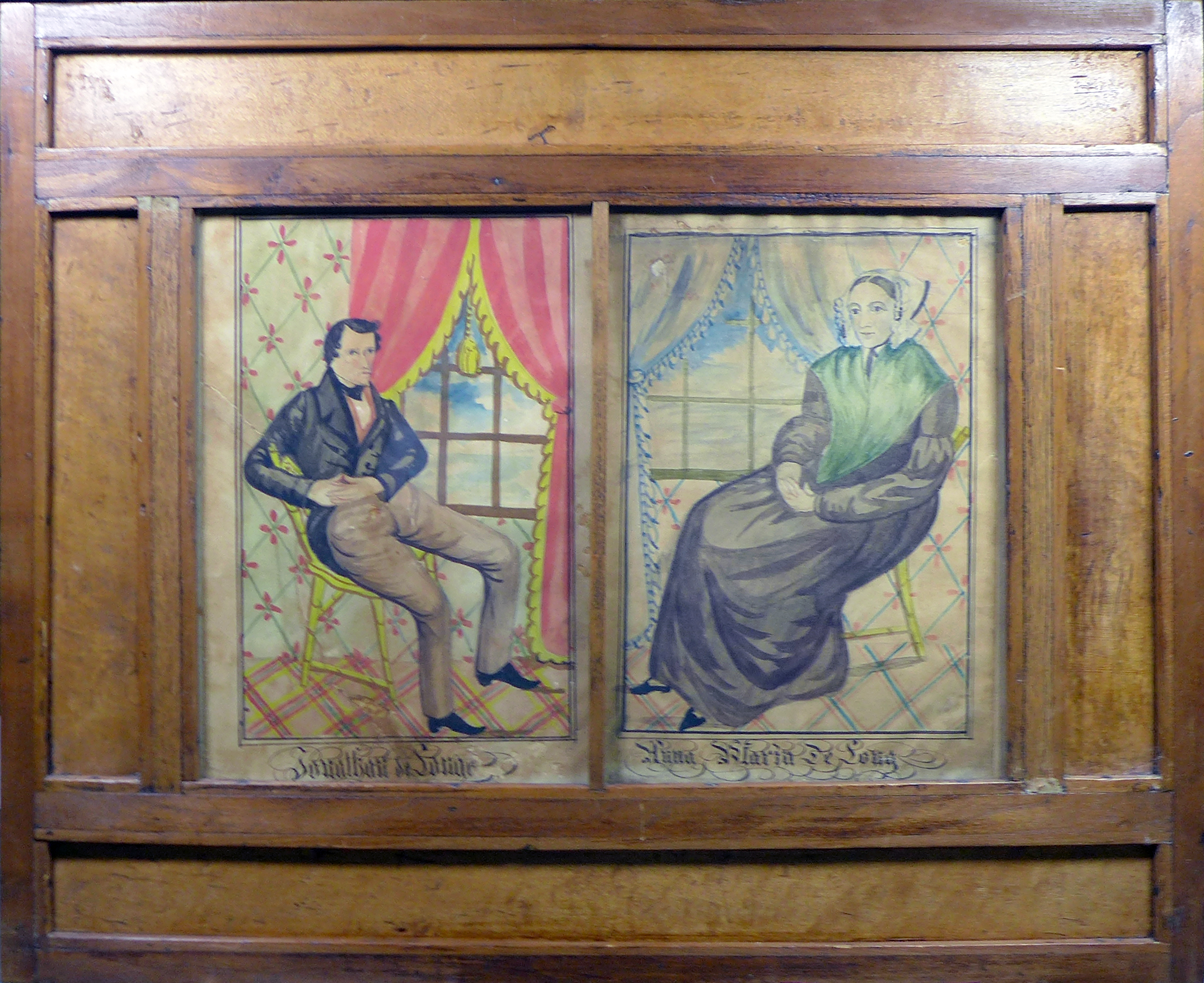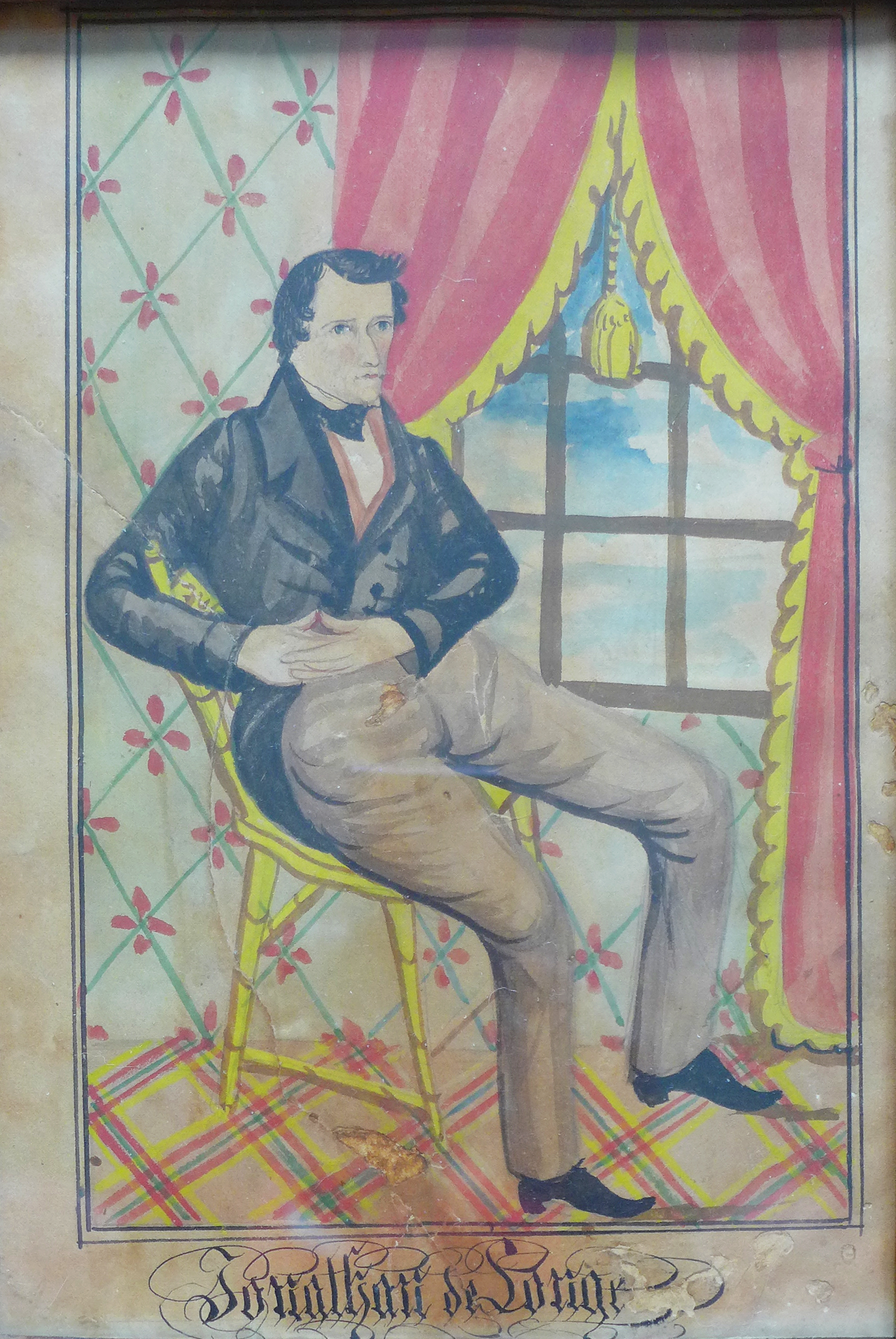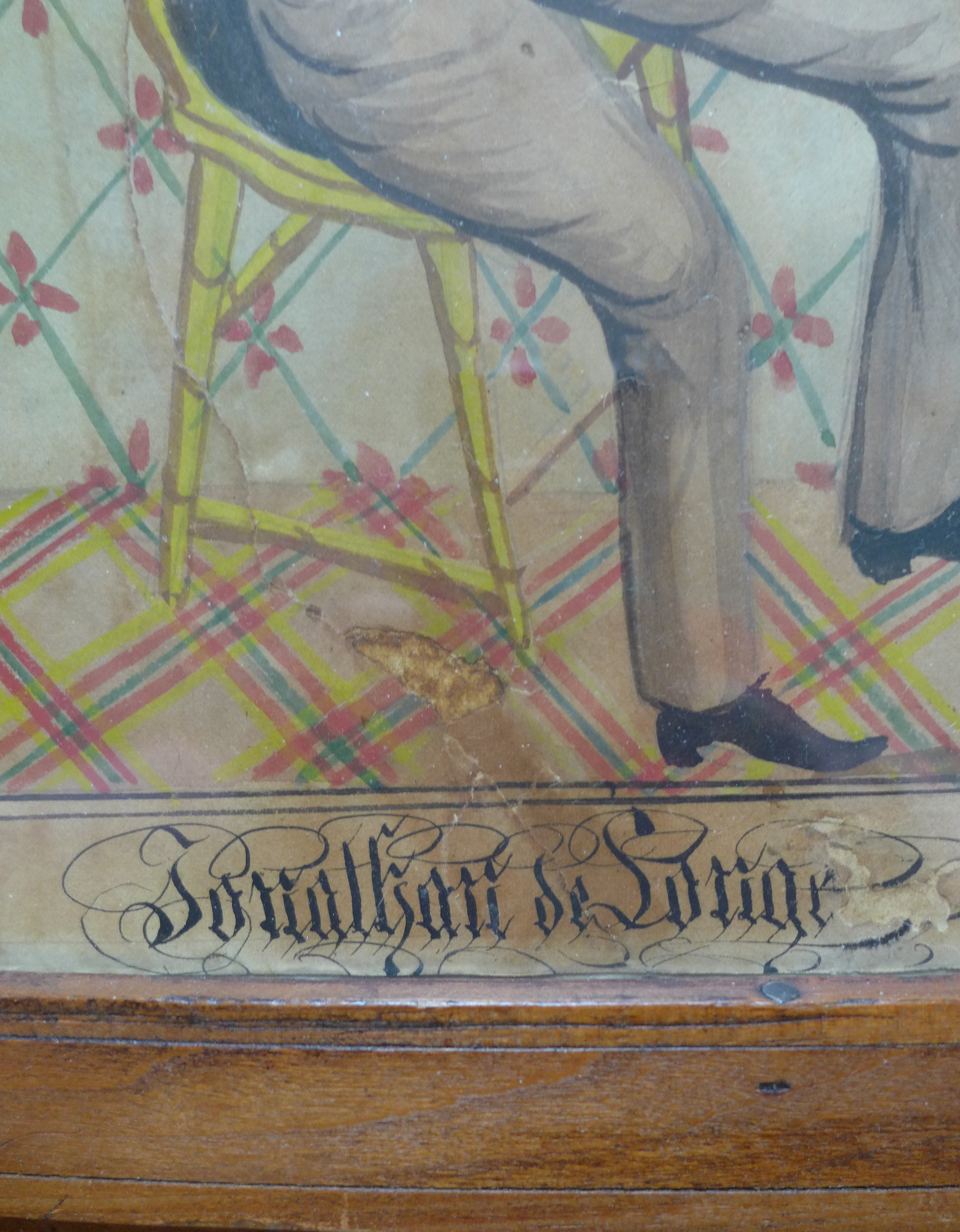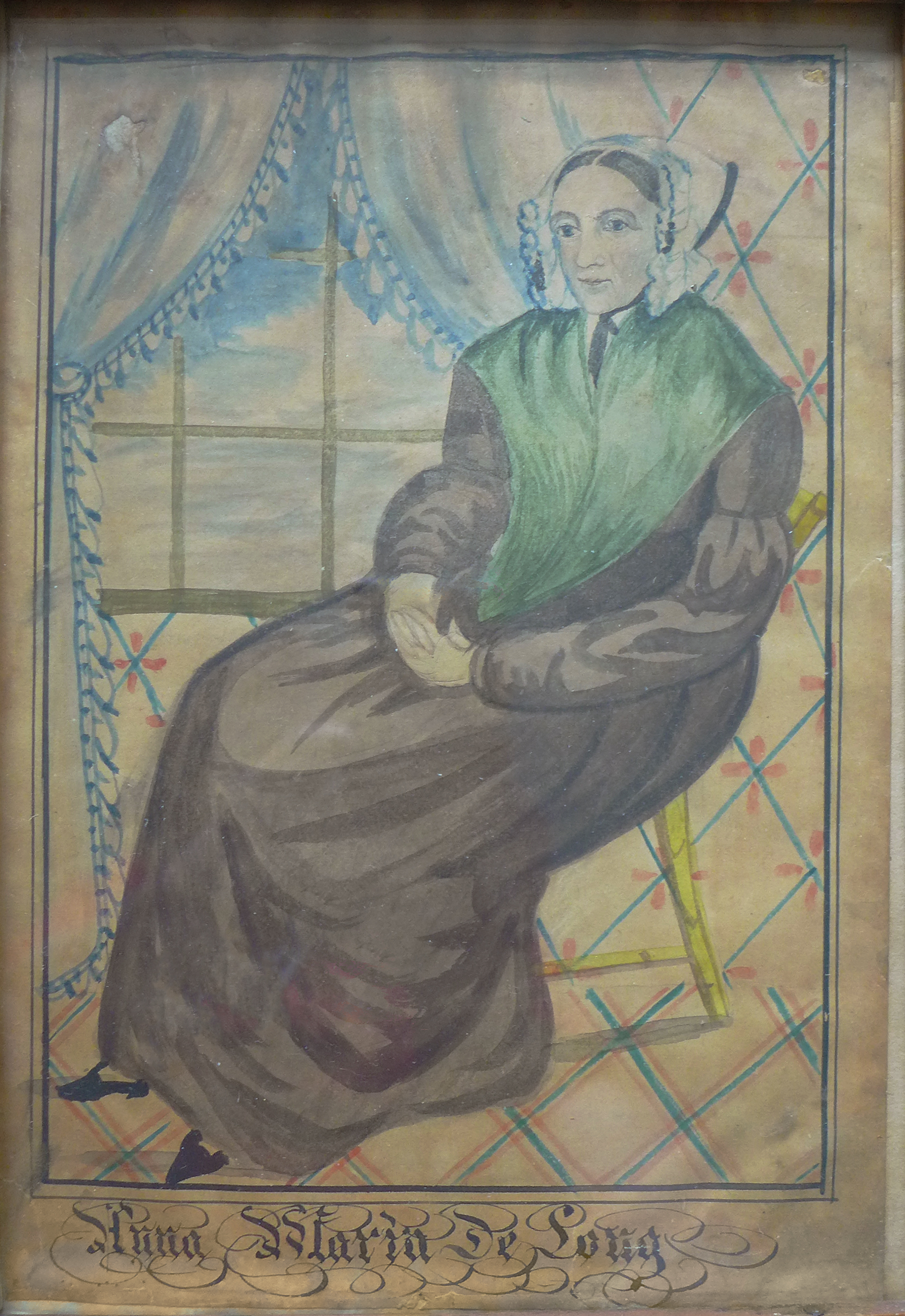
Note that this listing is quite long with information about the artist, sitters, and collection from which this came. Between this text and the thumbnail pictures, please click the “Read More” so you can read all of the description.
Attributed to "The Reading Artist”, anonymous, active 1828-1850 in Pennsylvania's Lebanon and Berks Counties. This artist identified most of his subjects via inscription along the bottom of the paper in an embellished broken Gothic script and sometimes included other details about the sitter such as date of the portrait, birth, baptism dates, and military rank of the subject. Most sitters have German names and are depicted in full-length and often seated in paint-decorated chairs. In most indoor portraits the subject sits or stands next to a multi-paned window with draperies, patterned wallpaper and patterned floors. The interior rooms depicted by this artist have the accoutrements that I associate to the American Fancy period.
Jonathan de Long was born September 5, 1799 in Lehigh County, PA. His parents were Christian & Anna Maria (Hensinger) DeLong. Jonathan died in 1848 and is buried in Lowhill Church Cemetery in Lowhill, PA under a tombstone with the name “Jonathan D. Long.” Jonathan’s family migrated to America early as his great grandfather, Peter (Pyeter) DeLong (DeLangh), was born in Germany in 1707 but by the time Peter died in 1768, he had migrated to Berks County, PA. Around 1818, our sitter, Jonathan, married Anna Marie Schnabel who was born August 12, 1800 in Berks County, PA. Together they had at least 14 children.
These portraits are one of those fun puzzles that I love to contemplate when looking at folk paintings. The puzzle makes me wonder whether the two portraits were taken at the same time or separately. Although the portraits depict the couple both sitting on a yellow chair with bamboo turnings in an interior with wallpaper and patterned floor. Yet, when you examine the chairs you see they are not from a set. The stiles of Jonathan’s chair are straight and lead to a paint-decorated tablet-style top rail. The legs on his chair are also straight. Anna’s chair has curved side rails and curved back legs. The drapery behind the two sitters are also different. The wallpaper pattern is nearly the same in both portraits except the lines that define the geometric design are blue in Anna’s portrait and green in Jonathan. In Anna’s portrait, the floor checkerboard pattern has two red lines on either side of a blue line. Jonathan’s floor has two yellow lines followed by two red lines on either side of one blue line. Without a doubt, The Reading Artist’s used a formula for the backgrounds of his portraits. The backgrounds represented the décor that most middle-class families tried to attain. The artist used this formula with most patrons because the portraits were a status symbol, commissioned to make the sitters look and feel like they had the ideal home. But were the slight differences between backgrounds of a married couple a conscious decision by the artist added for interest or did the couple have their portraits painted on two different itinerant trips through the area so that the artist couldn’t quite remember details of the first painted? Perhaps one portrait was painted in the town where the De Longs lived and the other on a visit to a relative in a nearby town so that the artist had no chance to look at the other.
The elements of puzzle are what I find so intriguing about folk art. This double portrait by a known (though anonymous), well-collected Pennsylvania artist is housed in a double, very intricately designed and built frame that is likely original to the portraits. Each portrait measures 9 ¾” x 6 ¾”. The period frame measures 20 ¼” x 16 1/2. Both portraits have repaired tears, small paper losses and acid staining due to the wood backing. They probably resided in the family until modern times until they were purchased by Esther Ipp Schwartz.
#6313 $8500
Provenance: Collection of Esther Ipp Schwartz (1904-1988). Ms Schwartz was an important collector and historian of decorative and folk art. She was such an avid researcher that museums often consulted her because of her uncanny ability to research and her extensive research library.





